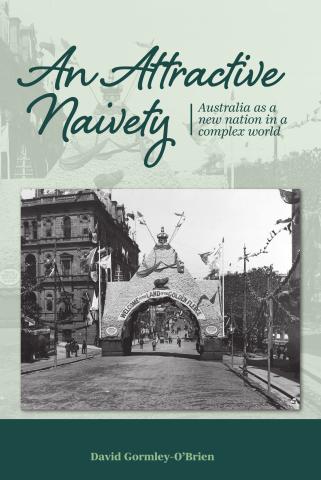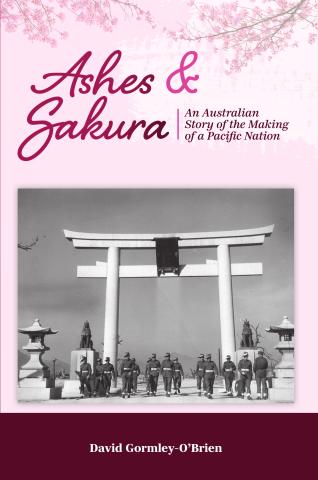Frequently asked questions
The following are some frequently asked questions about David Gormley-O'Brien's books.
About the Books
Ashes and Sakura is a historical reconstruction novel set in the aftermath of the Second World War. It follows Australian soldiers and nurses serving in the British Commonwealth Occupation Force in Japan, and the families they left behind in country New South Wales. Through intersecting stories of Tom Davis, his sister Evelyn, and the Italian prisoner of war she loves, the novel explores how ordinary people sought meaning, redemption, and connection in the ruins of war.
An Attractive Naivety is a sweeping historical novel following several Australian families across the turbulent first half of the twentieth century. From Federation to the Cowra breakout, it traces how ordinary men and women—tram drivers, nurses, engineers, and returned soldiers—grappled with duty, loss, and identity as their young nation sought its place in the world.
Yes. An Attractive Naivety and Ashes and Sakura form part of the Becoming Australia series—a collection of interconnected novels that trace Australia’s moral and social evolution from the early 1900s through the post-war years.
Each novel stands on its own, but they reward being read together. Readers who begin with An Attractive Naivety will recognise familiar faces and understand the family threads that run through Ashes and Sakura, deepening the sense of continuity across generations.
History and Inspiration
Both An Attractive Naivety and Ashes and Sakura grew from my research into Australia’s experiences in the first half of the 20th century. I was struck by the diaries, letters, and testimonies of ordinary men and women whose lives bridged continents and moral frontiers. Their voices revealed an untold chapter of who we were—and what we became.
Traditional history focuses on what happened — the sequence of events, causes, and verified facts drawn from archives and official records.
"Reconstructionist" history, by contrast, seeks to re-create what it felt like to live through those events. It combines documented truth with imaginative empathy to restore atmosphere, emotion, and moral complexity often missing from the record. This form of historical novel can recount the past as accurately as traditional history, because it involves similar research methods and critical interpretation of the data.
Both An Attractive Naivety and Ashes and Sakura use this approach: they remain faithful to the evidence, but step inside it — letting readers gain a greater understanding of a specific period and why people acted as they did.
Fiction allows us to explore the spaces where the archive falls silent — the private moments, emotions, and moral choices that rarely survive in official records.
By imagining the inner lives of people shaped by real events, fiction can reveal truths about fear, love, duty, and resilience that pure documentation cannot convey.
In An Attractive Naivety and Ashes and Sakura, I use storytelling to bridge those silences — not to distort history, but to enable readers to imagine what it was like to participate in the events.
Yes. Both An Attractive Naivety and Ashes and Sakura are grounded in meticulous historical research—drawing on a myriad of primary and secondary sources - unit war diaries, court transcripts, letters, newspaper reports and archives to capture real episodes like the bubonic plague in Sydney, the Cowra breakout, the BCOF occupation of Japan, and the Morotai and Tokyo war crimes trials. Although the Davis/Darcy families are fictive, many members are inspired by real characters; e.g. Norman and Armistice (Misty). Many characters in the two books are real like J. C. C. Bradfield and Kathleen Butler, the Chief Engineer and the "God-Mother" of the Sydney Harbour Bridge respectively, Dr John Ashburton Thompson and Dr Frank Tidswell who directed Sydney's public health response against the bubonic plague outbreak in 1900 etc etc.
Themes and Availability
Both An Attractive Naivety and Ashes and Sakura are available as e-books (Kindle) or as paperbacks.
The e-books are available on Amazon and the paperbooks are available either online at the Shop or at other participating local bookshops and online stores.
Click on An Attractive Naivety or Ashes and Sakura for links on Where to buy?
The “ashes” of war and the “sakura” (cherry blossom) of renewal symbolise Japan's destruction during the war and the hope of rebirth.
It evokes the hopeful innocence of early twentieth-century Australia—an emerging nation confident in its destiny but unaware of the hostility and brutality of the empires that she would have to contend with. It was coined by Tatsuo Kawai, the Japanese plenipotentiary to Australia at the outbreak of war. Kawai had a soft spot for the Australians whom he regarded were honest and open-minded.
See Chapter 10 of An Attractive Naivety
Spanning Federation, two world wars, the Depression, the Sydney Harbour Bridge, the Cowra Breakout, and the long road to peace, the Becoming Australia series captures the humour, hardship, and humanity of ordinary Australians in extraordinary times.
For readers who cherish meticulously researched historical fiction, An Attractive Naivety and Ashes and Sakura together form a vivid, unflinching, and ultimately hopeful account of Australia’s coming of age in the 20th century.


